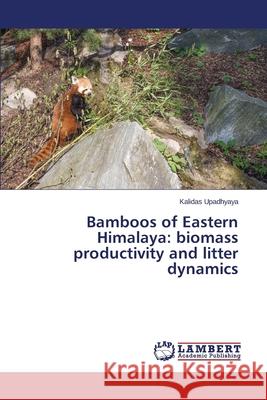Bamboos of Eastern Himalaya: biomass productivity and litter dynamics » książka
Bamboos of Eastern Himalaya: biomass productivity and litter dynamics
ISBN-13: 9783659384622 / Angielski / Miękka / 2015 / 132 str.
Bamboo, the poor man's timber, is one of the most useful and fascinating perennial woody grasses belonging to the tribe Bambuseae of plant family Poaceae. Bamboo constitutes one of the dominant secondary successional vegetation types in the Eastern Himalayan region. Abandoned shifting cultivation areas and forest clearings form favourable habitats for bamboos to invade, colonize and establish faster when compared to broadleaved native species resulting in pure and/or mixed bamboo forests. Due to its abundance and faster regrowth, these bamboo species meet a variety of socioeconomic and ethno botanic human needs in the region. Bamboos in this part of the world are mainly distributed in nutrient poor soils, particularly when the ecosystem is undergoing recovery following disturbance. Nevertheless, the role of bamboos in soil nutrient cycling in degraded sites has been less studied, unlike other broadleaved forest tree species. Therefore, the book highlights the findings of the work conducted by the author on biomass partitioning and decomposition dynamics of the major bamboos growing at different altitudes of Eastern Himalayan region.
Bamboo, the poor mans timber, is one of the most useful and fascinating perennial woody grasses belonging to the tribe Bambuseae of plant family Poaceae. Bamboo constitutes one of the dominant secondary successional vegetation types in the Eastern Himalayan region. Abandoned shifting cultivation areas and forest clearings form favourable habitats for bamboos to invade, colonize and establish faster when compared to broadleaved native species resulting in pure and/or mixed bamboo forests. Due to its abundance and faster regrowth, these bamboo species meet a variety of socioeconomic and ethno botanic human needs in the region. Bamboos in this part of the world are mainly distributed in nutrient poor soils, particularly when the ecosystem is undergoing recovery following disturbance. Nevertheless, the role of bamboos in soil nutrient cycling in degraded sites has been less studied, unlike other broadleaved forest tree species. Therefore, the book highlights the findings of the work conducted by the author on biomass partitioning and decomposition dynamics of the major bamboos growing at different altitudes of Eastern Himalayan region.











